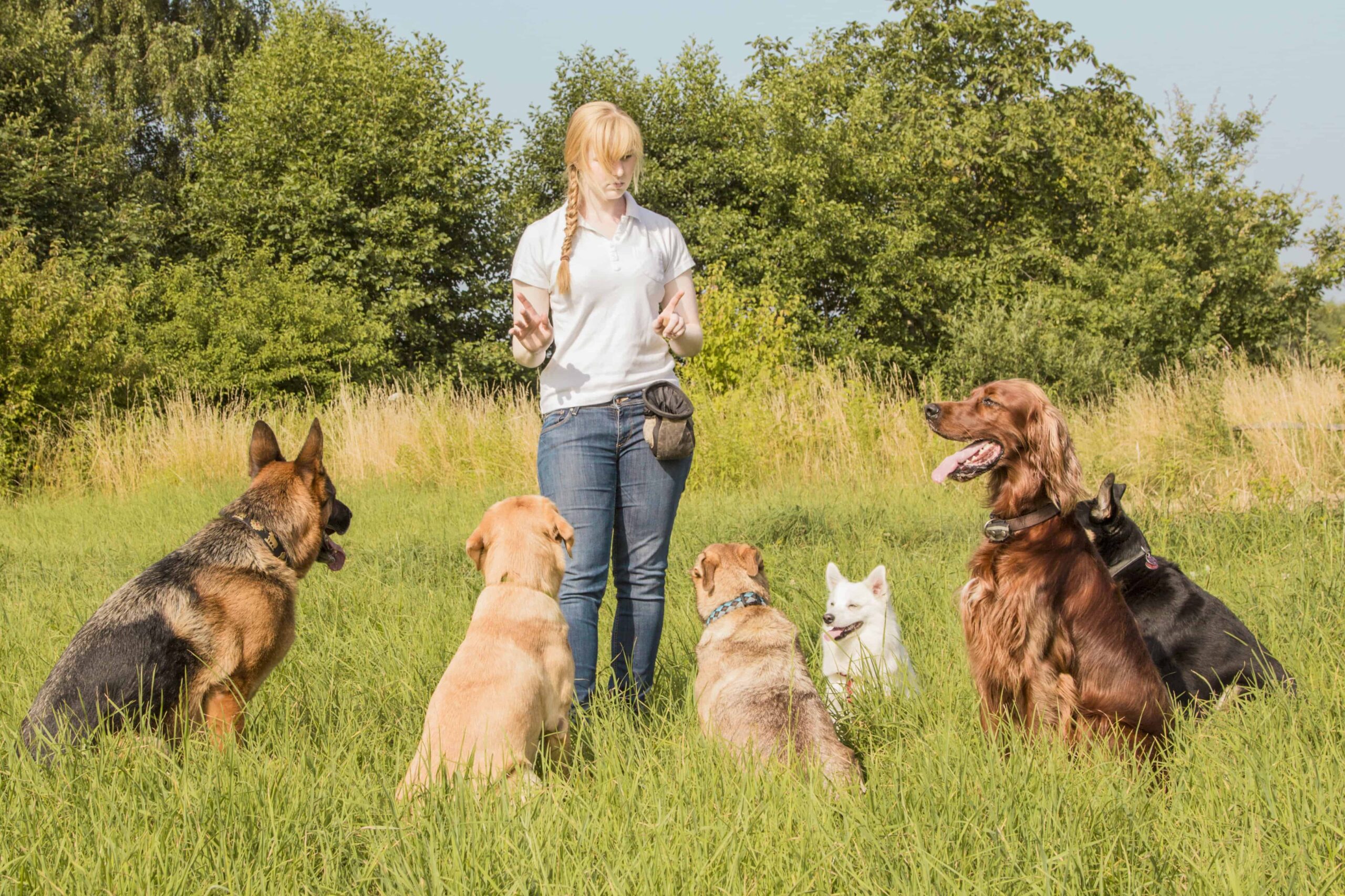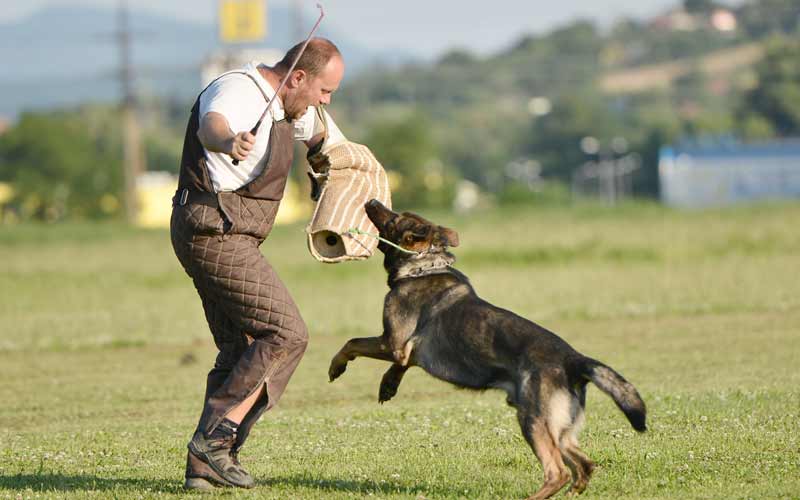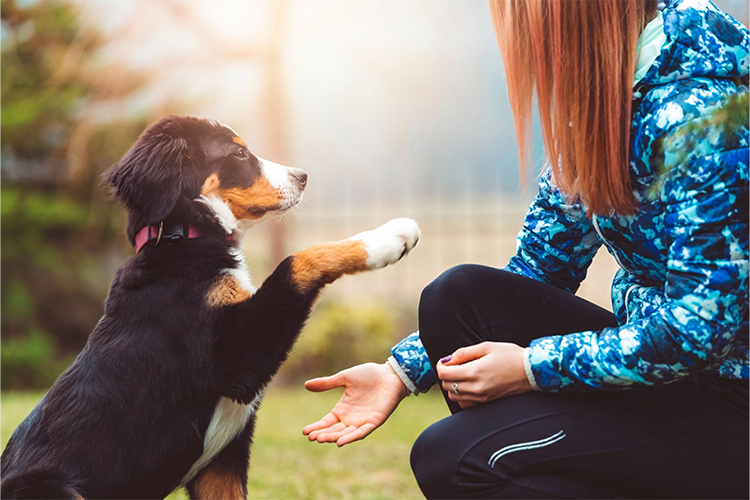Fun Tasks to Improve Your Dog Training Experience
Fun Tasks to Improve Your Dog Training Experience
Blog Article
Important Tips for Effective Dog Training: An Overview for Pet Owners
Effective canine training is a complex procedure that needs a strategic method tailored to both the family pet's character and the proprietor's goals. Comprehending exactly how to navigate these challenges can significantly boost the training experience, inevitably changing the partnership between proprietor and pet.
Recognizing Canine Behavior
Comprehending canine behavior is essential for effective training and promoting an unified connection between canines and their proprietors. Canines interact mainly through body movement, articulations, and activities, making it critical for proprietors to interpret these signals precisely. Identifying a pet's posture, tail placement, and ear orientation can provide understandings into its mood. A wagging tail does not always show happiness; it can additionally signal excitement or stress and anxiety.

Socialization plays a significant function in canine behavior; exposure to numerous settings, people, and other animals can considerably impact a dog's character. Aspects such as type qualities and individual personality must direct training approaches, as some breeds may have particular behavior characteristics that necessitate customized techniques. By understanding these components, owners can create an encouraging atmosphere that urges positive actions, resulting in effective training results and a deeper bond with their family pets.
Establishing Regular Commands
Efficient communication with your pet dog begins with developing constant commands. This foundational element of training is critical for promoting understanding in between you and your family pet. Consistency in the commands you make use of guarantees that your pet can reliably connect details words or phrases with the wanted behaviors.
When choosing commands, select clear, distinctive words that are simple to set apart and say from each other. Stay clear of utilizing similar-sounding commands that might confuse your canine. For instance, using "rest" and "stay" is suitable, yet "rest" and "hit" might lead to misunderstandings.
In addition, preserve the same tone and volume for every command. Pet dogs are delicate to vocal hints, so differing your tone can develop complication.
It is similarly crucial to make sure that all member of the family get on the very same web page regarding the commands made use of. A united front in command use will prevent combined signals and reinforce the understanding process.
Favorable Reinforcement Methods
The power of positive support in canine training lies in its capacity to urge wanted habits through incentives and praise. This technique is grounded in the concept that behaviors adhered to by positive outcomes are most likely to be repeated. By including positive support into your training regimen, you can successfully form your pet's habits in a positive fashion.
To execute positive support, it's necessary to determine what motivates your pet, whether it be treats, playthings, or verbal praise. When your pet carries out a wanted action, such as remaining on command, right away award them with a treat or her comment is here love. This organization between the command and the positive outcome enhances their understanding.
It's critical to timing the rewards appropriately; delivering the reinforcement within seconds of the preferred actions helps your pet dog make the link (dog training). Additionally, consistency is vital-- guarantee that all member of the family use the same commands and benefit systems to stay clear of complication

Slowly, you can decrease the frequency of treats as your pet dog finds out the habits, transitioning to applaud or recurring benefits. This approach not just cultivates a strong bond between you and your canine however additionally advertises a favorable learning environment, making training a satisfying experience for both.
Socialization and Communication
Constantly revealing your pet to a variety of environments, people, and other pets is critical for their social development. Socializing should begin early, preferably during the important home window of 3 to 14 weeks, when young puppies are most receptive to new experiences. Older pet dogs can additionally profit from continuous socialization efforts.
Introduce your pet dog to different settings, such as parks, pet-friendly stores, and city locations. This exposure aids them adjust to different stimuli, decreasing anxiety and fear actions. Encourage favorable interactions with various other canines and individuals, ensuring that these encounters are regulated and safe to foster self-confidence.
Utilize organized playdates with well-mannered pets, as this can improve your dog's social abilities and teach them appropriate habits. Obedience classes and training sessions likewise offer superb chances for socializing, enabling your dog to engage with others in a supervised environment.
Screen your dog's body language throughout interactions, as this will aid you evaluate their convenience level. Slowly raise exposure to more difficult scenarios while guaranteeing that each experience declares. A well-socialized dog is more probable to exhibit balanced actions, making them a joy to have in any setup.
Attending To Common Training Difficulties
Every pet dog proprietor will certainly encounter training obstacles eventually, regardless of Go Here their pet dog's age or socializing degree. Identifying usual problems such as stubbornness, interruptions, and fearfulness can assist in developing efficient methods for improvement.

Distractions during training sessions can derail emphasis. To combat this, start training in a quiet environment with marginal stimulations. Progressively introduce diversions as the pet dog ends up being a lot more efficient in commands. Short, constant training sessions are also effective in maintaining attention.
Terror can impede a canine's learning procedure. Progressive desensitization to the source of concern, coupled with favorable reinforcement, can aid relieve stress and anxiety. Persistence is important; never compel a pet dog into a scenario that Learn More Here triggers distress, as this might aggravate the problem.
Ultimately, understanding and resolving these typical challenges with a structured approach will certainly foster an extra efficient training experience, reinforcing the bond between pet dog and owner while advertising efficient learning.
Final Thought
In summary, effective dog training counts on a thorough understanding of canine behavior, the establishment of constant commands, and the application of positive reinforcement methods. Socialization plays an important duty in establishing well-adjusted pet dogs, while attending to common training difficulties calls for persistence and flexibility. By executing these vital strategies, family pet proprietors can foster a solid bond with their dogs and promote preferable habits, inevitably leading to a harmonious partnership in between humans and their canine companions.
Comprehending pet behavior is vital for reliable training and fostering an unified relationship between dogs and their proprietors.Socializing plays a significant role in pet behavior; exposure to different atmospheres, individuals, and various other pets can substantially influence a dog's temperament.The power of positive reinforcement in pet dog training exists in its ability to motivate preferred habits via incentives and appreciation. By incorporating favorable support into your training routine, you can efficiently shape your dog's behavior in a useful fashion.
In recap, successful dog training counts on a detailed understanding of canine actions, the establishment of regular commands, and the application of positive reinforcement strategies.
Report this page